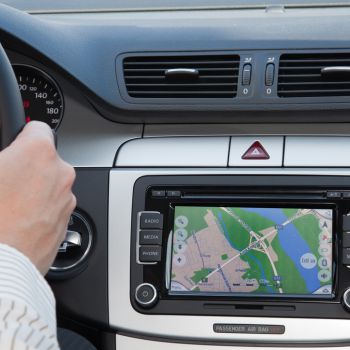 When your car's infotainment system malfunctions—whether it’s the GPS not responding, the radio failing to turn on, or your phone not charging—you might be dealing with an underlying electrical problem. Understanding what could be causing these issues can help you troubleshoot effectively.
When your car's infotainment system malfunctions—whether it’s the GPS not responding, the radio failing to turn on, or your phone not charging—you might be dealing with an underlying electrical problem. Understanding what could be causing these issues can help you troubleshoot effectively.
Understanding Your Car's Infotainment System
Your car's infotainment system, commonly referred to as the head unit, integrates several key components like the radio, speakers, a touch screen for navigation, auxiliary ports, and USB charging options. It draws power primarily from the alternator while the engine is running and can rely on the battery when the engine is off. Wiring from both the alternator and battery ensures the system stays connected to the vehicle's electrical network. Inside, the radio connects to the speakers via wires, and many systems include an amplifier to boost sound quality. Multiple fuses are typically installed to safeguard against electrical surges and protect sensitive components.
Potential Causes of Infotainment System Failure
In most cases, problems with the infotainment system stem from electrical issues. Here are some common culprits:
- Blown Fuse: When a fuse blows, the entire system may fail to function. This could result from water damage or wear over time. Blown fuses are often located in the vehicle's interior fuse box, which you can inspect yourself if you're comfortable doing so.
- Loose Wiring: If wires become loose or disconnected, certain functions may operate inconsistently or stop altogether. This situation often precedes a blown fuse and should be addressed immediately.
- Battery Connection Issues: Poorly connected batteries or faulty terminals can cause intermittent power loss to the infotainment system. This may result in features turning on and then abruptly shutting down.
- Ignition Switch Problems: Damage to the ignition switch can disrupt the flow of electricity to critical systems, including the infotainment setup. This issue may also affect the engine and lighting functionality.
Non-Electrical Factors Affecting the System
Even if the electrical system appears intact, other factors can interfere with the infotainment system's performance:
- Antenna Malfunction: Over time, the antenna's connection can degrade due to corrosion or loosening. While CDs might still play, the radio signal may weaken or disappear entirely. In such cases, consider installing an antenna booster to improve reception.
- Touchscreen Failures: Sometimes, the touchscreen remains unresponsive even though other functions like charging and playing music work fine. Physical damage such as scratches or cracks, or accidental spills, can disrupt the screen's operation and potentially harm internal components.
- Software Glitches: Modern vehicles rely on complex software systems. Updates or newly installed programs may occasionally conflict with existing software, leading to delays or malfunctions.
- Amplifier Malfunctions: If the amplifier’s fuse blows or there’s a connection issue with the speakers, the audio output may fail despite the radio functioning correctly.
Steps to Diagnose and Fix the Problem
Before seeking professional help, here are some troubleshooting steps you can take:
- Inspect the charging port for obstructions and test it with different devices or outlets.
- Examine the vehicle's fuse box for blown fuses using either a flashlight or multimeter.
- Use a voltmeter to confirm whether power is reaching the infotainment system from the alternator or battery.
- Clean the touchscreen thoroughly to eliminate dust and debris.
- Double-check all wire connections for tightness and signs of wear.
- Perform a soft reboot by disconnecting the power source, waiting a few minutes, and reconnecting it.
- Consider performing a factory reset on the infotainment system to restore default settings.
While these steps can help identify minor issues, diagnosing more complex problems often requires specialized tools and expertise. At DaSilva’s Auto Body, we offer comprehensive diagnostic assessments to pinpoint the root cause of your infotainment system issues. Our skilled technicians can repair damaged components and ensure your system operates smoothly. Contact us today to book an appointment and get your car back to peak performance.
Powder sintered filter, stainless steel powder sintered filter, metal powder sintered filter, copper powder sintered filter, stainless steel sintered filter
Xinxiang Zhike Machinery Equipment Co.Ltd , https://www.zhikefilter.com